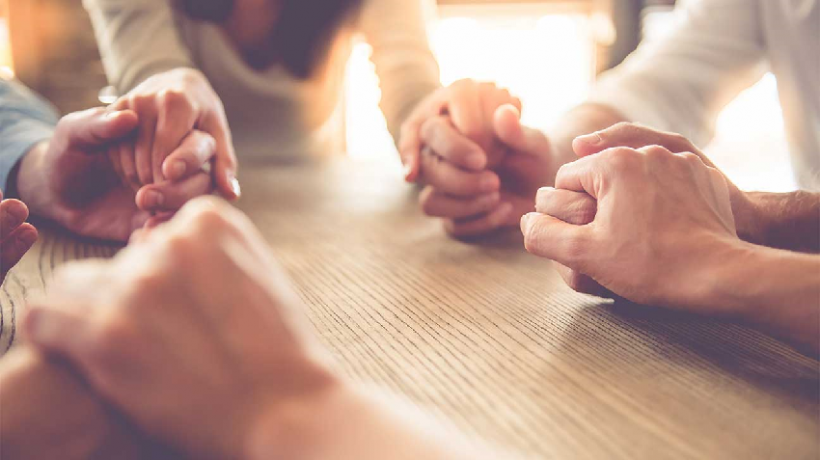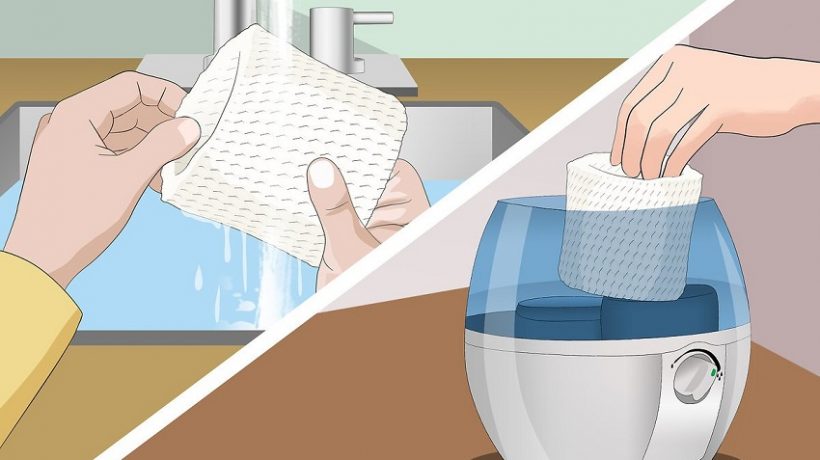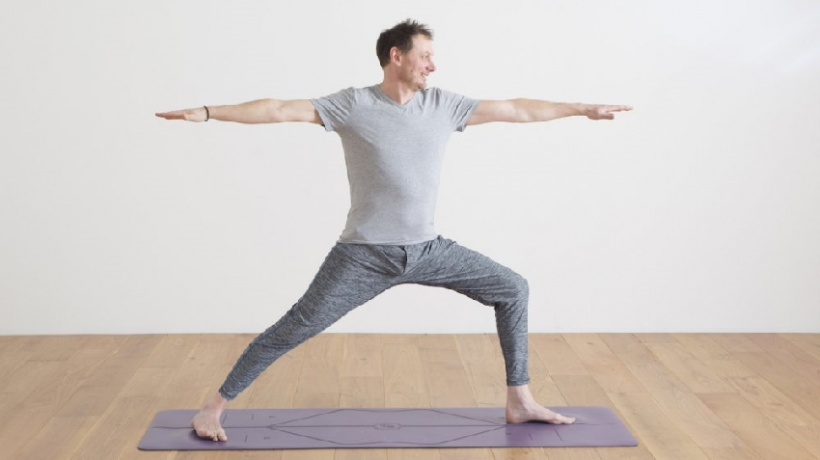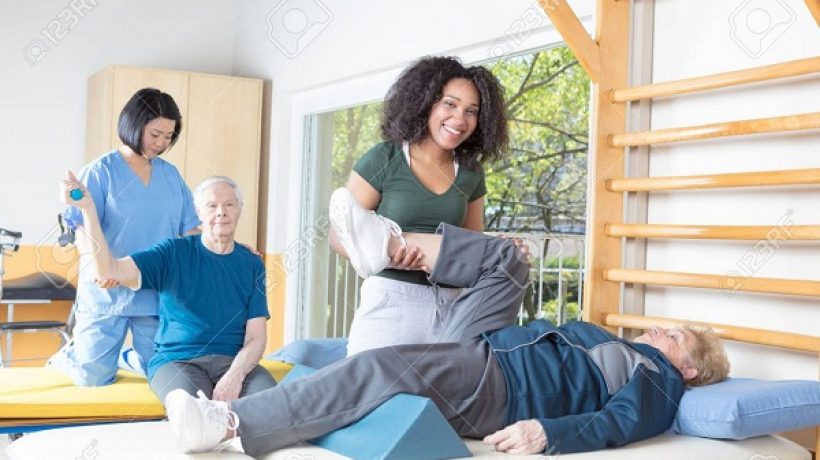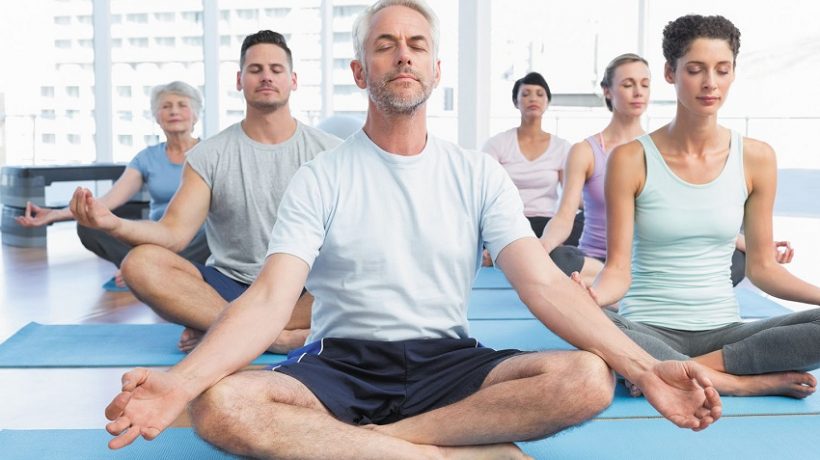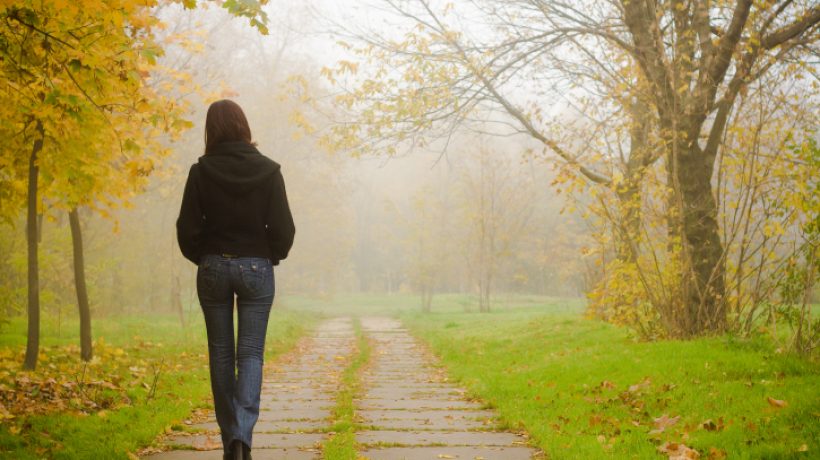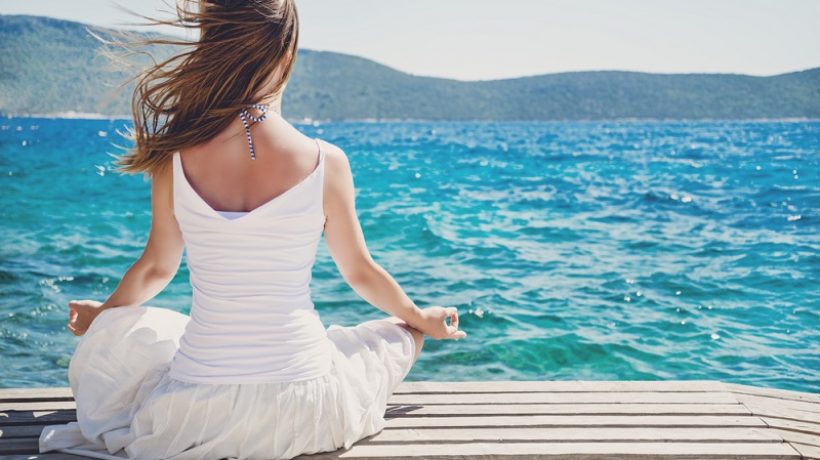Sometimes life can be challenging
With everything going on in the world today it's ok not to feel 100% We can help each other with mindfulness and well being support
Struggling with work and life commitments
Feeling isolated and alone?
Overwhelmed by day to day life
Low self esteem and social anxiety
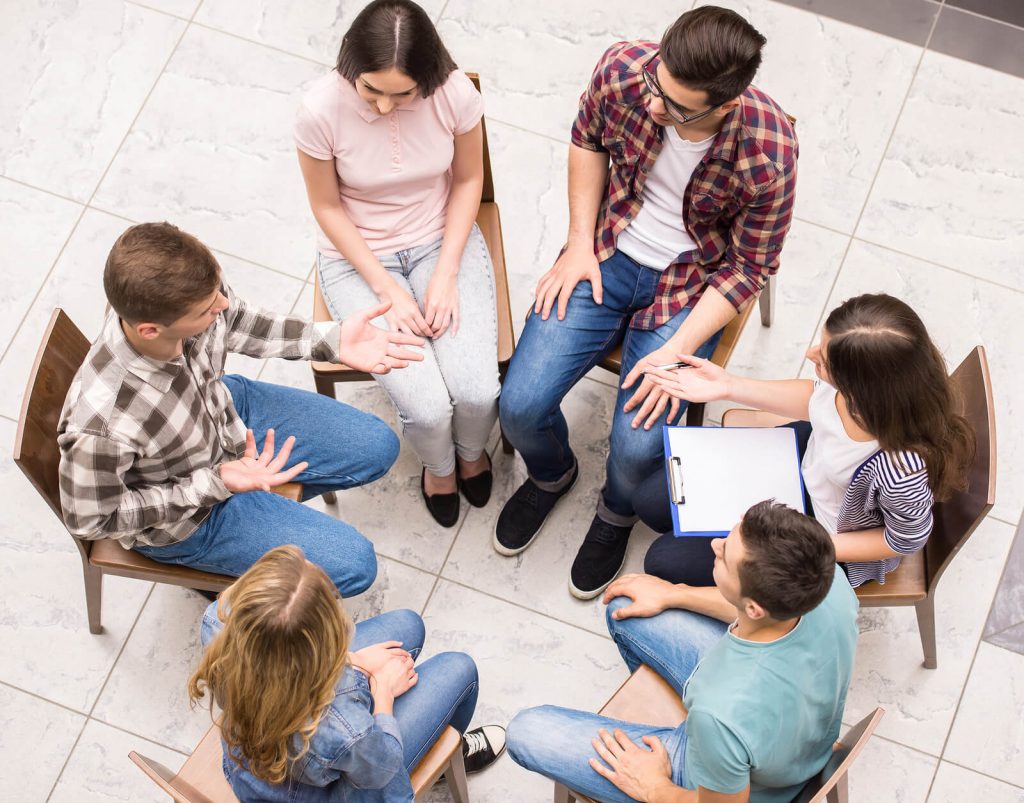
Hope Town Lodge is our safe haven for people that need some love, care and advice in a world full of challenges. Wherever your from or life experiences one thing is true of us all, were all human and we all deserve love.
Our blog looks at all the different ways to create great mental health. From homely comforts to breathing exercises and positive mantras to both kickstart and end your day with calm. We hope this helps you as much as its helps us ...
How can you help yourself?
Note down your worries
Be one with nature
Take your time
Be kind
Read our articles
How to adjust the disc brakes on a mountain bike?
As a mountain biker, you know that adjusting the brakes on a bike can be a tricky task. For example, you may need to loosen the brake cable or adjust the pads. But, there’s one adjustment that’s often overlooked and that is the position of the rear disc brake. When searching for the best cruiser bikes for women, it’s crucial to consider the bike’s braking system; if you don’t adjust the disc brakes properly, your rear wheel will tend to lock up and you’ll lose control of your bike, highlighting the importance of understanding how to adjust the disc brakes on a mountain bike for safe and enjoyable riding. Read on to find out how.
Free rehabilitation and detox centers
To find a free rehabilitation center near you, you can start your search with the Substance Abuse and Mental Health Services Administration. Use their Directory of State Agencies for Substance Abuse Services to discover a local resource you can contact in your state. Be prepared to verify your annual income, health insurance, and need for financial assistance before you enroll.
How often to change humidifier filter?
The main purpose of a humidifier is to remove dry air from the air in your home. The water that is used to clean the air then returns to the room, and as such, has the ability to contain bacteria and germs. Humidifiers have been scientifically proven to improve the health of people in your home by helping you live a healthier life. But they can cause issues if you change the filter too often. So, here’s a guide on how often to change humidifier filters. The humidifiers without filters do not require changing operation.
A humidifier filter should last about two months with regular use. If you have a bigger or smaller humidifier, then the filter will need to be changed more or less often. If the filter is visibly dirty after one month of use, it should be changed immediately.
Do I Need to Replace any Filters in my Humidifier?
There are a few different types of humidifier filters, and the frequency with which you’ll need to replace them will vary depending on the type. The most common filter is a mechanical filter, which should be replaced every 2-6 months, although this can depend on the severity of use and how dirty your water is. If you have a humidifier with an evaporative wick filter, it should be replaced every month or two. If you have a steam humidifier, the filter should be replaced every 3-6 months.
How often to change humidifier filter?
Humidifier filters should be changed every 3-6 months, depending on the type of filter and how often it is used. If you have a furnace humidifier, the filter should be changed every 3 months. If you have a cool-mist humidifier, the filter should be changed every 6 months. If your filter is visibly dirty, it should be changed sooner. If you’re not sure when your filter was last changed, or if it’s time for a change, check the manufacturer’s instructions. The used water on Humidifier can contain bacteria, so change the filter every 3-6 months.
Steps to change humidifier filter
Step 1: Remove the old filter from the Humidifier.
At first, to remove the filter, turn the humidifier upside down and find the gap between the machine and the filter. Then use your fingers or a coin to pry it off.
Step 2: Clean the inside of the Humidifier with a mild detergent.
Once you have removed the filter, use a mild detergent to clean the inside of the Humidifier.
Step 3: Rinse well and replace the filter
Make sure that you rinse off all of the soap and then replace the filter in its original position.
Step 4: Insert new filter
Make sure that you are inserting it incorrectly, as there is usually a specific way they should go in so that water can flow through them properly. Push it in until it’s seated snugly against the bottom of the machine.
Things to consider before changing humidifier filter
- Know when to change the filter– Humidifier filters should be replaced every 3-6 months, depending on the type of filter and how often it is used.
- Consider bacteria levels – The used water on Humidifier can contain bacteria, so change the filter every 3-6 months.
- Clean the Humidifier – Make sure to clean the Humidifier every time you change the filter.
- Check the manufacturer’s instructions – Each Humidifier is different, so it’s important to check the manufacturer’s instructions for your specific model.
- Make sure the filter is inserted correctly – If the filter isn’t inserted correctly, it won’t work properly and you could end up with a water leak.
- Get the Right Filter for Your Humidifier– There are a variety of humidifier filters on the market, so it’s important to get the right one for your specific model.
- Price– Humidifier filters can range in price, depending on the brand and type.
- Size– Make sure to get the right size filter for your Humidifier. Some are small and some are large.
- Availability– Not all humidifier filters are available at local stores. If you can’t find the specific filter that you need, try looking online.
- Warranty– Some humidifier filters come with a warranty.
Tips for keeping your humidifier filter long-lasting
- Keep the filter dry- Make sure to keep the filter dry when not in use.
- Don’t overuse the filter- If you overuse the humidifier filter, it will wear out faster and need to be replaced more often.
- Clean the Humidifier regularly- Cleaning the Humidifier will help keep it functioning properly and also extend the life of your filter.
- Follow the manufacturer’s instructions- Each Humidifier is different, so be sure to follow the manufacturer’s instructions for your specific model.
- Get the right filter for your Humidifier- There are a variety of humidifier filters on the market. Make sure to get the right one for your specific model.
Can you wash a humidifier filter?
Some humidifier filters can be washed, while others cannot. Check the manufacturer’s instructions to see if your filter can be washed. If it can, be sure to follow the specific instructions for how to wash and dry the filter. If your humidifier filter cannot be washed, be sure to replace it when it becomes dirty or damaged.
To clean a humidifier filter:
- Remove the filter from the Humidifier.
- Rinse the filter under cool water until it is clean.
- Allow the filter to air dry completely before reinserting it into the Humidifier.
- Repeat this process as needed.
- If the filter becomes damaged, replace it with a new one.
Conclusion
There are different types of humidifiers, but all of them need to be cleaned at least once a month. The best way to clean your Humidifier is by pouring a small amount of vinegar into the water tank and running it for 10 minutes. You can also use white vinegar in place of the vinegar if you prefer. Once you’ve cleaned your Humidifier, make sure that it’s completely dry before replacing the filter. To avoid any bacteria from growing in your Humidifier, change the filter every six months or so to ensure that it’s always clean and germ-free.
Factors for a successful rehabilitation
The goal of good rehabilitation is to relieve pain and stabilize injuries. That is why to have a successful rehabilitation, we must know some important factors.
A physiotherapy is a tool that can help you improve your quality of life. It is a discipline that is responsible for healing and recovering all your physical abilities. In this article, we tell you about some important factors that will allow you to have a successful rehabilitation at the hands of physiotherapy.
How to complete successful rehabilitation?
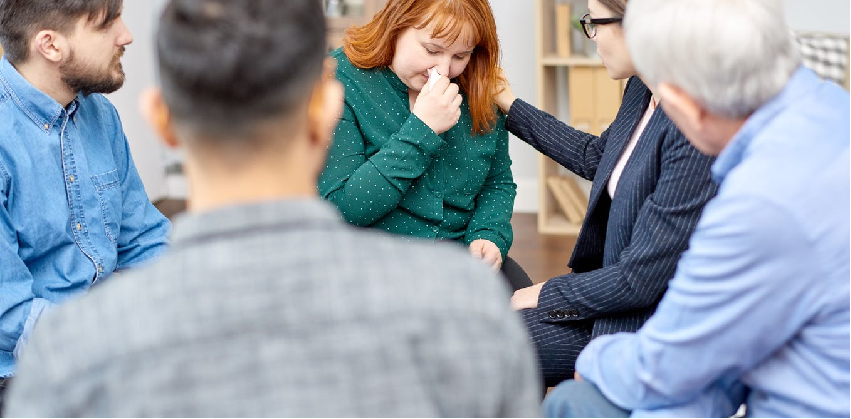
These types of activities require professionals in the field to guide you in your recovery. Physical rehabilitation is carried out using different techniques and instruments to relieve pain. Reduce inflammation, recover muscle, movements, correct posture…
It is required to assess the patient in an integral way because our body is a whole. For this reason, our professionals are in charge of carrying out an individual study of each patient.
With this, you can know what kind of techniques are the ones that will favor you the most. The study of osteoarticular deficiencies indicates whether there are fractures, dislocations, disqualifications, or many other situations that may have different levels of complexity.
Types of rehabilitation:
Within this branch of health, there are several types of recovery and each treatment is different. Knowing and understanding this can help you have more clarity on how to best get to your rehab. The main categories are:
Musculoskeletal: recovery or repair of deformities or ailments related to the musculoskeletal system of the human being; It includes the correction of muscles, ligaments, bones, tendons, among others.
Pediatric: Seeks to repair damage present in children at birth or during their development. Its objective is to strengthen problems such as genetic defects, delayed growth, paralysis, among others, through therapeutic exercises.
Neurological: This subcategory deals with problems and diseases resulting from unfavorable neurological conditions that have produced significant physical problems. Some of them are related to the spinal cord, brain trauma, multiple sclerosis, aneurysms, and others.
Factors for successful rehabilitation:
- Go to a professional specialized in the area who will carry out a comprehensive and individual study to know your condition as best as possible.
- Know the type of problem and investigate if you have doubts. Do not hesitate to ask your therapist any questions that may arise.
- Specialized treatment for the specific injury.
- Follow the instructions of the professional and the exercises to do at home to the letter.
- Listen to your body.
There are also different treatment modalities for each of the subcategories. Some of those that we use in NeuroFT are manual, electrical, mobilizations, hot and cold techniques, among others.
It is essential that you follow your therapist’s recommendations to the letter. The most important factor in successful rehabilitation is consistency and patience with your body’s own rhythm.
If you have problems related to any of the factors mentioned above or if you have pain or discomfort and you do not know the exact reason, do not hesitate to contact us.
You may also be interested in Practicing Yoga: Tips for beginners and most common mistakes
Practicing Yoga: Tips for beginners and most common mistakes
In this second article on the practice of Yoga for the Runner’s Bag. We will continue with some recommendations that will help us take the first steps in the world of Yoga. In our first article: “Practicing Yoga: A Beginner’s Guide” we talked about the history of yoga, the most common types of yoga practiced today and we began to introduce the keys to understanding this activity: Breathing (Pranayama), Postures ( Asanas) and posture sequences (vinyasa-krama). In this second part, we will see what we need to start practicing yoga, we will comment on some tips and common mistakes that we usually commit when we start practicing and we will complete this post with some indications to practice yoga at home.
What do I need to start practicing yoga?
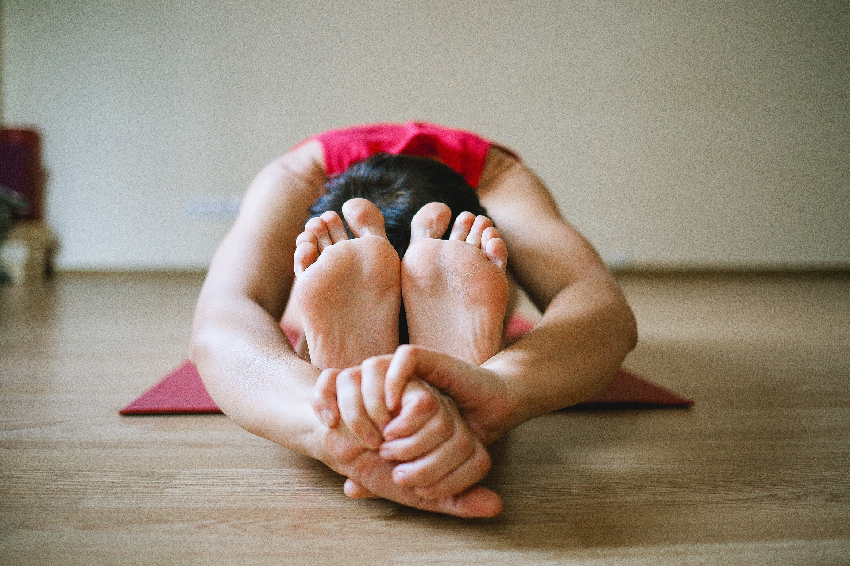
One of the advantages of practicing yoga is that we practically do not need material: a good mat with a non-slip surface, a blanket to cover us during the final relaxation, comfortable clothes, and, above all, a good teacher to guide us at the beginning. If it is true that over time we will be able to practice yoga at home without the need for someone to guide us or just follow the class through the numerous online yoga videos on the net, in the first years it becomes almost essential to figure out the teacher who accompanies us in learning Yoga gradually.
To start practicing yoga and becoming aware of our body through postures (asanas). And sequences (vinyasa-krama) it will always be easier if we start with those simpler postures that require less effort on our part and with which it is easier for us to pay more attention to our body and breathing. A good teacher will guide us overtime to advance our knowledge of this practice, correcting our body in each posture and giving fluidity to the transition between postures. Starting with a teacher also has the advantage that he will clarify which postures are counterproductive if we have some type of specific injury.
Tips and mistakes to avoid when starting to practice Yoga
- You don’t want to go fast. Yoga is not a 100 m sprint race, rather it is similar to preparing for a long-distance race. You have to be patient and go little by little. Knowing our body and its response to each posture or sequence has a process. And sometimes that we must respect.
- Flexibility and strength are gained over time and depend in part on each other, do not try to go beyond what your body allows you abruptly. Yoga should help you get to know your body, its limitations, and how to go further, but always gradually.
- Losing concentration very quickly or not being able to switch off the mind is normal at first. Focus your mind and your attention on your breath as much as possible and it will be easier for you to have the concentration necessary to perform each posture correctly.
- Being injured and not mentioning it to your teacher is another very common mistake. If you have back, knee, cervical problems, or any other injury, tell your yoga teacher. And he will recommend which postures are appropriate, counterproductive, which others can help you improve that injury. Or which ones you should do with greater caution.
- Use the breath as a means to concentrate and escape from thoughts. Breathe only through your nose, getting used to doing it slowly. And accompanying the movements with exhalation or inhalation as requested by each posture or asana.
- Enjoy the final relaxation. The moment of relaxation at the end of the yoga practice or class is essential to complete the awareness of our body. And necessary to recognize how the sequences and postures have influenced it.
How to practice yoga at home?
Practicing yoga at home, although at first glance it seems extremely easy since it does not require equipment. Or practically space, requires taking into account some key aspects to be effective:
- Define in advance the session to be carried out, both in terms of time and physical demands. Try to carry out activation sessions at the beginning of the day and relaxation sessions before going to sleep. And you will see how the body assimilates the same posture differently depending on the intensity with which we do it and the sequence in which it has been included.
- A session guided by the voice of another person will help you to concentrate only on the posture. And you will avoid breaking the thread of the sequences if you do not remember part of the session.
- Start with short sessions that include sequences and postures that you already know or have practiced in guided classes.
- Do not focus all the practice on your body. Be aware that the mind and breathing are fundamental parts when doing yoga.
- You can increase the duration of the sessions by lengthening the time you remain in each posture and/or repeating the sequences several times.
With this second post, we complete the initial approach to the practice of Yoga. In future articles, we will present some examples with easy-to-understand sequences of postures and different objectives (strengthening, flexibility, relaxation, etc.). As well as dedicating an entire article to the practice of yoga as a complement to runners. Where we will try to compensate for imbalances effects that running causes in our body.
You may also be interested in Free drug rehab centers in the United States
How to prevent testicular cancer
Patients’ testicles with testicular cancer have a great chance of cure when it is detected early. In many cases, the diagnosis is delayed up to 5 months from the initial symptoms, in part, due to ignorance of the symptoms of this type of cancer.
Free drug rehab centers in the United States
Do you need to find a free drug rehab center in the United States? We can help you. Find the best free centers or payment facilities to overcome your addiction quickly and easily. Choose a center and contact a representative today to get your life back.
For people struggling with drug or alcohol addiction and who have limited resources to pay for treatment, free rehab centers can be an inexpensive option to start on the road to recovery.
According to the 2014 National Survey on Drug Use and Health, 4.1 million people struggling with addiction sought and received some type of treatment, but only 2.3 million people received it in a setting that specifically treated The addiction. A free rehab center can help those who fall outside of this picture.
People or their family and friends who want to search for this resource may not know how to get started. With the right knowledge, resources, and a little preparation, the answers to the following frequently asked questions can pave the way for finding the free drug rehab center in the United States that is right for you.
What are the Free Rehabilitation Centers?

Simply put, free drug or alcohol rehab centers are organizations that use government money, distributed by the state, or charitable or faith-based organizations that support people in recovering from drug or alcohol addiction. . For those without a ton of income or with inadequate or uninsured insurance, these centers offer detoxification services, treatment, and support.
Treatment programs come in a variety of forms, including inpatient, outpatient, and partial hospitalization, as well as follow-up support programs.
How Quickly Will Treatment Start?
Because funds for free rehab centers are limited and must be distributed to large numbers of people, there is sometimes a waiting list to participate in inpatient programs. Also, certain people can be prioritized for spaces, such as pregnant women, and thus move to the top of the list, pushing others away in priority.
This can sometimes discourage people from getting help because they don’t want to wait and they may simply decide not to continue treatment. It has been shown, as noted by the National Institute on Drug Abuse, that addiction treatment is more likely to be pursued if it is available when an individual is ready to seek it. Therefore, many of the free rehab programs provide outpatient and medical maintenance services for those awaiting more intensive treatment.
How to Find a Free Drug Rehabilitation Center in the United States?
Once a person is ready for treatment, there are a number of resources to help find free rehab programs. Our website generally tries to provide up-to-date information on free drug rehab centers in the United States, but if for some reason we couldn’t find a rehab center in your area or the ones on our website are not suitable for you. your needs, there are always other options:
Public Assistance and Medicaid Programs
There are likely more than 1,000 free addiction treatment services available in the United States, and many of these are publicly funded. This includes tax-supported programs at the city, county, state, and federal levels. Many free or low-cost rehab centers can be found by using the treatment facility locator. Provided by the Substance Abuse and Mental Health Services Administration: SAMHSA – En Español
Using the facility locator requires some patience and tenacity, and may require more fieldwork. Including contacting potential treatment providers to clarify details about programs and requirements.
Finding publicly funded drug addiction treatment at the local level can be a bit more complicated. However, a good place to start is in the city offices of the place where you ideally wish to receive treatment. Public welfare programs such as those offered by the state Department of Health. And Human Services are often excellent referral sources for free drug treatment.
Religious groups, non-profit and charitable organizations
For some people, religious and charitable groups can be an excellent source of free addiction treatment. (Note, however, that in most cases, the treatment offered by a religious group is likely religious/spiritual in nature.) Some of these groups may already have funds specifically set up for members or other recipients to attend. To get the help they need using discretionary funds.
Drug Rehabilitation Scholarships
A little-known secret from the drug treatment industry is that many drug and alcohol rehab centers offer scholarships. Awarded under a wide variety of conditions. The scholarships often offer completely free drug addiction treatment or at least partially funded treatment. In some cases, a scholarship can match your insurance contributions. For example, if your insurance only pays half the cost of treatment. The sponsoring rehab center may offer a grant to finance the rest of the cost.
However, verifying if you can get a scholarship requires some work on your part. As few treatment centers advertise their scholarship offers. This means that you may need to contact rehab programs directly. Advocate for your case, and ask if they have a scholarship available. If not, they may be able to offer a referral to another type of publicly funded rehab facility.
Finding free drug addiction treatment isn’t difficult. If you spend half the effort you did to find, use, and control your drug or alcohol use. Most of the research and fieldwork that needs to be done to find a free treatment can be accomplished from the privacy of your own home using nothing more than a computer and a telephone. If you don’t have any of these resources, you can use your local public library computer. For research and a free calling program like Skype to make phone calls directly from your PC.
You may also be interested in How long is short term rehabilitation
How long is short term rehabilitation
Short term rehabilitation is a widespread and beneficial practice that can be implemented in a variety of different settings. The average short term rehab facility has been shown to have an electronic medical record (EMR) system, high patient satisfaction from both staff and patients, and at least one registered nurse on duty 24 hours a day.
Are you looking for a natural remedy for back pain? Try yoga!
Do you have back pain tormenting you? Do you want to know the natural remedy for back pain? Have you tried all the traditional methods but still haven’t solved them? Would you like to try a natural cure for low back pain? So maybe it’s time to try one of the most effective holistic disciplines to defeat back pain in a natural way: yoga.
Everyone sooner or later suffers from pain affecting the back and the closely connected body structures. But few are those who face the problem in the right way and defeat it definitively. Often you take painkillers, go to a physiotherapist to get a massage. Go to the pool for a few months, but this way, you don’t go straight to the cause of the problem. Unfortunately, if back pain arises, it is because something is wrong with our posture, muscles, or movements that we do every day.
Are you looking for a natural remedy?
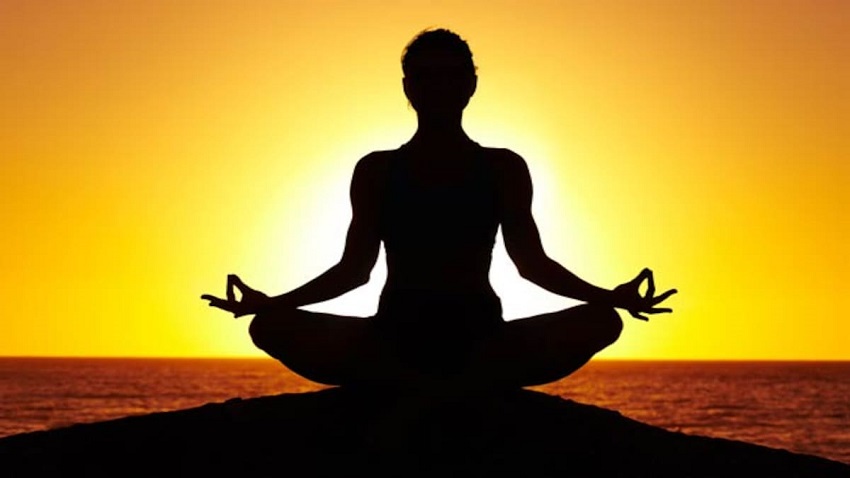
Yoga is a scientifically proven natural remedy because it allows you to go directly to the cause of the problem, works by changing your posture, the way you move relaxes tense muscles, which are often the cause of pain, and thus offers a long-term effective natural solution.
Yoga as a natural remedy for back pain: some scientific evidence
One of the biggest causes of back pain is muscle tension. By this term, I mean all the tensions in the muscles responsible for the proper functioning of the spine and which can create pain for various reasons.
When the back muscles are not strong enough to keep the spine erect, they are unbalanced, some work too much and others too little, or when the posture is not the best, muscle imbalances are created that cause discomfort. Yoga works in various ways to eliminate this problem.
First of all, it tends to relax contracted muscles. Often it is this contraction that is the cause of the pain.
Thanks to continuous stretching of the spine in various directions, all the muscles in this area are stretched considerably. They relax, so the discomfort disappears slowly.
Furthermore, there is another principle on which yoga is based: that of the agonist/antagonist muscles. If you contract a muscle, the antagonist one automatically relaxes. Thanks to this simple but very effective principle, yoga can work all the muscles of the back, and consequently, the antagonists relax, and the pain disappears. All this happens without the need for drugs.
Yoga naturally strengthens the back muscles
Often many problems in the lower back, shoulders, and neck area are due to the back muscles being too weak.
To maintain correct posture, you need to activate various muscles that keep the spine erect and assume its normal physiological curve.
However, most of us have these muscles that are too weak and not used to keep the back straight and so we assume unnatural positions that, in the long run, cause pain in both the cervical and lumbar areas.
We are all used to sitting on chairs, sofas, car seats, and not at all sitting on the floor without a backrest that supports our spine. Remember that sitting on the floor would be the most natural thing in the world.
Unfortunately, all our comforts mean that we never use the muscles that are important for back health, so we cannot assume a correct posture. Unfortunately, comfort is the worst enemy of the back and for many aspects also of our health.
Yoga, asana after asana, allows us to incredibly strengthen all the muscles of the back. This makes us assume a correct posture in our daily life when we are standing when we walk and especially when we are sitting. Thanks to this strengthening and better posture, back pain will disappear completely day after day.
Yoga eliminates stress without the need for drugs
Stress and back pain are unrelated, but they don’t. Have you ever noticed that in periods when you are particularly stressed, back pain gets worse? It happened to me so many times until I realized it.
Numerous scientific researches, such as this one, and as many articles on the internet, such as this one, clearly explain that stress and back pain are closely related. Consequently, if the first is eliminated, the second problem usually disappears as well.
Thanks to yogic breathing, this ancient discipline is a formidable natural method to eliminate stress from our lives whenever it arises.
So now that you know that these two problems are linked, the next time you have back pain, try to figure out if maybe it is a time that you are particularly stressed.
If so, I recommend doing the following abdominal breathing exercise, which can surely help you relax your back naturally. Lie on the ground in a prone position ( savasana ) and observe you’re natural breath without changing it.
Now begin to breathe more consciously and deeper
As you exhale, contract your abs slightly, moving your navel towards them. Try to get all the air out there. Breathing in, release the tension in your abdominals and, without any effort, let your abdomen swell naturally. Again, try to let in as much air as possible without straining too much naturally.
Continue breathing deeply like this for a few minutes. The longer you can stay there, the better. If your back pain is caused or simply made worse by stress, you will slowly feel that it will subside. Many people feel their back feels better after practicing this exercise.
Of course, don’t just do it once. Try to do it constantly, both several times a day and for many days. Yoga is undoubtedly effective and has countless benefits, but it must be practiced constantly. You can’t think of solving problems by practicing it once a month for just one hour.
Yoga as prevention (remedy for back pain)
Even if you have no back problems right now or you have managed to make the pain that haunted you disappear. You should always keep your spine healthy. Otherwise, your back pain will reappear sooner or later.
Many times, maybe after swimming or after going to a physiotherapist. I felt considerably better. Still, I continually made the same mistake: I did not continue to do the same exercises that had allowed me to feel better. I continued to relax in a sprawling way and did not sleep correctly. In a nutshell, I was once again creating the basis for the much-hated low back pain to arise again.
It often happens that if there is no pain, nothing is done, but it shouldn’t be. The whole back should always be kept in shape even if it doesn’t hurt at the time. According to yoga, the back is the most important part of the body.
You don’t have to wait for a problem to arise to deal with it. Rather you should make a healthier lifestyle so that it doesn’t come out at all. And yoga allows you to do it completely naturally.
This discipline is a perfectly natural fit for preventing back pain by reducing muscle tension, muscle strengthening, stress reduction, and dramatically increasing flexibility.
If you practice constantly, your spine and the body structures connected to it will be so fine that you will completely forget about the much-hated low back pain.
In this article, I have explained the natural remedy for back pain. As I have tried to make you understand, practicing yoga is a way to relieve not only relieve pain and the right approach to prevent pain from arising again. I hope I managed to make you want to open the mat and practice some yoga.
You may also be interested in How to relax your mind quiet mind in 5 fast ways
What happens on the days of the holy week?
Holy Week is one of the most important celebrations of the Catholic religion. The days preceding the crucifixion of Jesus Christ are commemorated and his subsequent resurrection on Easter Sunday. At present, many traditional festivals are celebrated around this date, some of which have international fame among parishioners.
Surely if you have Easter holidays or your family celebrates these days, you have ever heard of Ash Wednesday or Good Friday, but do you know what happens on the days of the holy week? If you are not very clear, we will tell you what is celebrated each day of Holy Week so that you understand the importance of this tradition for Catholics around the world.
What happens on the days of the holy week?
What is Holy Week? For Christians, Holy Week means commemorating the passion, death, and resurrection of Jesus of Nazareth. This period is characterized by a strong liturgical activity within Catholic Christianity because for the parishioners. These days are a way to remember the history of their religion, redo their Christian vows, and confess their sins. Holy Week does not coincide historically with the events narrated in the Gospels. It is, instead, a symbolic period to commemorate the last days of Christ’s life and his subsequent resurrection.
This year 2021, Holy Week begins on Sunday, March 28, and runs one week until April 4. While it is true that the first day of Holy Week is Palm Sunday, we cannot forget that just 40 days before this special day, Ash Wednesday is celebrated. Ash Wednesday is the first day of Lent in the Catholic calendar and symbolizes the nullity and penance of persons before their creator. The famous ash of this day is obtained from the burning of bouquets of the previous year.
Let’s see what is celebrated each of the following days of Holy Week to better understand the meaning and importance of this celebration.
Friday of pain
For some Christians, Holy Week begins on Sorrow Friday, the Friday before Palm Sunday. On this day, also called Passion Friday, the pain of the Virgin Mary during the crucifixion of Christ is commemorated.
This day is usually celebrated between Catholics and Orthodox. The Virgin of Sorrows is usually worshiped while singing the Stabat Mater, a prayer dedicated to the pain of the Mother of God. Some believers suspend the consumption of meat from this day until the end of Holy Week.
Palm Sunday
Palm Sunday represents the beginning of Holy Week and the end of Lent, making this day one of the most important in Christianity. On this day, the moment in which Jesus proclaims himself King of the Jews is honored and is received by the inhabitants of Jerusalem with bouquets made of palm leaves to welcome him to the city.
In Catholicism, this Sunday is commemorated with a mass in which the bouquets of each person are blessed, thus symbolizing the arrival of Jesus in Jerusalem. For the Catholic Church, this day and the rite of bouquets have as their meaning the glory and suffering of the death and resurrection of Christ.
Holy Monday
This is followed by Holy Monday when the day Jesus expelled the merchants from the Temple of Jerusalem is commemorated. In addition, the Anointing that Mary, the sister of Lazarus, made to Jesus in his house is also commemorated.
The Gospel tells that six days before Passover, Jesus went to the house of Lazarus, whom he had raised from the dead. During dinner, Mary took expensive perfume and anointed Jesus’ feet and hair with it.
As with other days of Holy Week, on Holy Monday, processions take place in different parts of the world. The processions of Andalusia are especially well known, an autonomous community where Holy Week is celebrated in style.
Holy Tuesday
Processions continue in different parts of Spain and South America. In the Gospel, it is Holy Tuesday when Jesus of Nazareth anticipates Judas’s betrayal and thus communicates it to his disciples, who, perplexed, ask Jesus to identify who the traitor will be. Thus, Jesus hands Judas a piece of greased bread and tells him, “What you have to do, do it right away.”
Holy Wednesday
This day marks the end of Lent and the beginning of Easter. It is this day in which it is remembered that Judas met with the Jewish assembly of wise men to plan the betrayal of Jesus Christ in exchange for thirty pieces of silver.
Holy Thursday
Holy Thursday begins the Easter Triduum (days in which the Christian liturgy commemorates the passion, death, and resurrection of Jesus Christ, as we have said). On Holy Thursday, the last supper of Jesus with the disciples is remembered, where the Eucharist constitutes him, and Jesus carries out the washing of feet for his disciples.
Holy Friday
We come to the celebration of Good Friday, one of the most intense days of Christianity. It is on Good Friday (the following day of the Easter Triduum) when the passion of Christ is commemorated, as well as his crucifixion and, finally, his death. According to tradition, during these 24 hours, Catholics fast and refrain from eating meat and other desires considered worldly.
Holy Saturday
Also called Saturday of Glory, Holy Saturday is commemorated the day after Jesus’ death and awaits his resurrection, which is why some refer to Holy Saturday as the Easter Vigil.
The Easter Vigil carried out from the early hours of Saturday to Sunday represents the prelude to the most important celebration of Christianity. The priests wear white or gold as a sign of joy for the resurrection of the Lord.
Easter Sunday
Thus we arrive at the celebration of resurrection Sunday, also called Easter Sunday or Glory Sunday. It is considered the central feast of Christians and, on this day, the resurrection of Jesus is commemorated three days after being crucified.
What is the origin of Holy Week?
The origins of Holy Week are diverse, but for Christians, they have their bases in the Gospels of Mark, Matthew, John, and Luke, mentioned in the Bible. Each of the apostles recounts his own experience through the passion, death, and resurrection of Christ, three of the most important events for Christianity.
According to Christian tradition (based on sacred texts), this period comprises the specific events that we have mentioned in the previous section. It is worth mentioning that the origin of Holy Week is not understood without talking about the Jewish Passover, since it is in the book of Exodus where we understand that Jesus (the Messiah) is the Passover Lamb, sacrificed to redeem all the sins of the world.
It is also interesting to talk about other historical sources not officialized by the Catholic Church, which assure that Holy Week has its origins in the pagan festivities of the Goddess Astarte, corresponding to the Greek goddess Afrotidta. According to legend, this goddess fell from the sky into the Euphrates River inside an egg, which is why. At the beginning of Holy Week, in many countries of the world, celebrations such as the Easter Rabbit are held; a party that consists of painting and hiding eggs for children and adults to find.
You may also like to read, How to meditate: the most common questions about meditation
How to Relax Your Mind: Quiet Mind in 5 Fast Ways
How to relax the mind? You worry about work, money, health, partner, children … do you want me to continue the list? Yes, there are tons of things to worry about at any given moment. How many times does it happen to you that in a moment of idleness, the mind should be “free and quiet,” what fills it instead of just worries? You will soon learn some quick techniques to relax your mind and have it calmer.
Worry can be useful if it is aimed at solving problems, but it is of no use when it has the sole function of making you unhappy or interfering with your daily life. The standard psychological methods of how to relax and deal with everyday worry are quite simple. Be careful because they are simple and relatively well known does not mean that you do not need to use them from time to time. So let’s see how to make your mind calm and learn what it means to relax mentally!
1. How to Relax Your Mind: Awareness for a Quiet Mind
This is the step many people skip. Because? Because they think they already know the answer. They probably think they know exactly what makes them anxious.
But sometimes, the situations, physical signs, and emotions that accompany anxiety aren’t as obvious as you might think. So, try to keep some sort of ‘Anxiety Diary,’ real or virtual. Does it indicate when you are feeling anxious and what are the physical signs of anxiety you notice?
This phase alone is sometimes enough to help people stem their anxiety. Never stop repeating it, especially for what concerns habits: “the awareness of me is the first step to change.” To train mindfulness, you can consult these easy mindfulness exercises.
2. One of the ways to relax is good breathing
Suppose you have been following PsychoSocial. For some time, you will have already read articles on how to treat anxiety also means practicing breathing.
You have to take conscious control of your breathing to send a message to the mind. So when you are anxious and find yourself breathing fast, try transforming it into a relaxed, slower, and deeper breathing. You can count slowly as you inhale and exhale and keep a hand on your belly to feel the movement of your breath.
Also, adopting any body position associated with being relaxed (although lying down just before giving a speech in public may not be very comfortable!). Relax the muscles, force an open attitude to the world (extend your arms, hint a smile, wink, or turn your face upwards).
3. Relax your mind and body
Relax your mind and body with calming and relaxing thoughts. On the other hand, there is always someone who tells you, in a stressful moment: “Think of something relaxing, don’t get upset!”. And you would like to answer him: “eh sure, how can I think now of something relaxing, that in a minute I gave a speech in front of the nation?”
The key is to get your calming thoughts ready early. It could be as simple as “Calm down!” But it has to be something you think is much more effective for you. It’s about finding the words or thoughts that you feel are relaxing for you.
Personally, when I’m under stress, I try to visualize myself sitting on a rock, contemplating the lush nature and greenery that surrounds me.
The more you know how to build relaxing details in your mind in detail, the more effective they will be if necessary. Try it, maybe do it before an important question or during an exhibition you particularly care about, you will see that you will need it.
4. How to relax mentally? By increasing activity
So how do you go about relaxing mentally? Strange as it may seem, the answer to anxiety is to do more activity. We tend to think that a state of stress must be controlled at all costs with relaxation, but this is not always true.
When you are not busy, the mind wanders, and it can take the direction of negative thoughts, so finding something to do can be a good alternative to worries.
The problem is that the states of anxiety block the propensity to do distraction activities … Nice paradox, right?
One answer may be to have a list of activities they like to do, ready in advance. When anxiety strikes in a moment of inactivity, it is time to do something to occupy the mind.
Try to have things that are easy to do on your list. For example, you might choose to go for a nice walk.
5. Anxiety, quiet mind, and sleep
Often when you are anxious, you have trouble sleeping. Sometimes when you feel anxious, there is nothing worse than being in bed, in the dark, with your negative thoughts occupying your attention.
Thus a vicious circle is established whereby: you do not sleep because you are agitated by various anxieties and worries and you get more anxiety because you can no longer have a restful sleep! Surely with such a routine, the quiet mind can be forgotten. Breaking this cycle can be difficult, but you need to get back to good sleep habits as soon as possible.
You may also like to read, Ardha dhanurasana, or bow pose for meditation
Bhujangasana pose: how to perform it and total benefits
Postures that involve bending the back must be approached with care. The spine is involved, and a bad movement can generate the aches and pains that we precisely seek to avoid. A good option to start exploring this type of posture is the well-known Cobra Pose or Bhujangasana pose in its original name.
The posture gets its name from being assimilated to the posture that cobras adopt when feeling threatened or irritated. This type of snake is characterized by having the ability to raise its head and deploy a kind of “hood” by way of intimidation.
In this article, we will tell you how to perform this Bhujangasana posture, with all the tips and advice that will help you obtain all its benefits and strengthen your back for more complex asanas.
What is Bhujangasana pose?
Like many other poses, Bhujangasana can seem straightforward. However, several factors must be considered if we seek to carry it out in a way that really brings us all its benefits.
As we mentioned when talking about yoga poses, a very common mistake is trying to tackle an asana by force, seeking at all costs to “go further.” In the seated clamp, this is a forward bend. Bhujangasana presents the opposite flexion of the spine, backward, but the same challenge: be patient. You don’t want to get to the final form overnight. Don’t seek to go further than your body allows. Focus on taking care of the key points of the posture and also on aligning the body correctly, and the rest will come in time.
With the regular and constant practice of the cobra pose, you will achieve more flexibility and strength in your back, which is vital for the performance of many asanas and for taking care of your posture in everyday life.
Also, Bhujangasana promotes the opening of the chest. On a physical level, it helps to alleviate respiratory problems since it generates openings in the lungs and, therefore fuller breathing. When it comes to the mind, taking a moment a day to perform the cobra pose will help relieve symptoms of stress, fatigue, anxiety, and even depression.
Bhujangasana Step by Step
- Lie face down on your mat.
- Stretch your legs. The toes point backward and the adductor muscles seek to rotate inwards, without the heels pointing upwards.
- Place your hands under the shoulders, with your fingers wide open. Plant your palms well. Glue the elbows to the torso.
- With an inhale, begin to extend your arms to lift your chest off the floor.
- Lower your shoulders and seek to firm your shoulder blades on your upper back. Look for an opening in the chest, rising from the sternum, but do not push out from the ribs so as not to put stress on the lower back.
- In the final form of this asana, you can look up, but only if this does not cause any compression in the cervical area. If not, keep your gaze straight ahead.
- Hold the pose for 5-10 breaths.
- To come out of the pose, gently bend your arms with an exhale. It is a good idea to perform Balasana next.
Bhujangasana benefits
- Strengthens the spine.
- It favors the elongation and opening of the chest, abdomen, and shoulders.
- Helps relieve symptoms of stress and fatigue.
- Stimulates the organs of the digestive system.
- Relieves problems associated with sciatica and asthma
Tips for beginners
In the beginning, it is important not to force the pose in an effort to reach its final form. Just climb as high as possible without creating tension. A good tip to ensure good form in bhujangasana is to perform it in stages: first, inhale, raise your chest and seek the opening of the chest and relaxation of the shoulders, but without helping with the hands. Repeat one more time, still without putting force on your hands, and try to look up. Just on a third inhalation, help yourself with your hands and gradually begin to extend your arms.
Last words,
Be aware of your shoulders while posing bhujangasana. That the space between them and their ears is not compressed. The elbows should point back. Make sure they do not tend to the sides, as this is a very common mistake. Always keep your hips connected to the floor.
You may also like to read, Does meditation work for everyone?
What is the best time to meditate?
In the morning, at noon or night? The truth is that, with a life full of activities and worries that we have, it is difficult to find a few minutes to sit down, relax a little and simply breathe, that is, meditate. What is the best time to meditate? The answer is very simple: the best time to meditate is when you have time and your occupations allow you space without interruptions. It is convenient for many people before the sun rises, at 5 or 6 AM, because the usual silence of that hour is added that the activities have not started yet. Other people find the ideal time for their meditation at night, once they have completed their routine tasks.
What is the best time to meditate?
According to experts, the best time to meditate is between 4 AM and 4 PM, since the Earth’s position in this period favors the balance between the pineal and pituitary glands when sitting up straight. Whatever time you decide to do it, the truth is that try to be constant, consistent and practice meditation at the same time every day.
Now, to meditate, you do not need any special equipment or an expert yogi, or an enlightened one. All you need is a few minutes (5, 10, 15 or more, the ones you can have their benefits) in which you can be with yourself without interruptions.
Sit in a comfortable position, either on a chair or the floor, but with your back straight and your chin parallel to the floor. You can place your hands in a prayer posture or simply put them on your knees. Become aware of your breathing and try to make it deep and slow. Close your eyes as far as a slit of light still seeps in and let your thoughts flow without framing any in particular. Remember that meditation is observing your thoughts without judging or acting or focusing.
Meditating in the morning will give you mental clarity to start your day and you will find that your ability to concentrate on performing your tasks improves. Meditating at night will give you an opportunity to relax, unwind, and recap your day before bed.
You should consider something very important: you do not need a special atmosphere with candles, or scents or special music. While these items can help you relax, they can also be distracting, especially in the first few days of your practice. The best thing is that you try different places and times of the day to meditate and find the one that makes you feel better. It will be the ideal time for your meditation.
Meditate first thing in the morning
For many people, meditation is part of the routine to start the day and it is the only time of day that they consider doing it, both because of the special atmosphere in the morning and because of timing.
One of the clearest benefits of meditating as soon as you wake up is that it sets the tone for the day. Meditation in these first hours allows you to eliminate pressure and stress for hours to come, preparing the mind to face the challenges that await.
For those who want to enter into meditation, want to establish the practice as a daily habit or simply find it difficult to find the space to do it, the morning is the best time. And of course, if you want to start the day with a mindset to face it, that is too!
Meditate at noon
Meditation can be a great tool to deal with small daily complications. Taking short breaks to meditate, especially at noon or in the middle of the workday (during the lunch break, for example), helps maintain calm even on the most stressful workdays.
On a physical level, meditation at this time will help you relax your muscles after several hours in front of a screen. In addition, it will increase your ability to concentrate, creativity or have an open mind to the ideas of colleagues and the tasks of the day.
Meditation at the end of work or in the afternoon
When you get home, meditating when the workday is over or in the evening is a favorite moment for many. The first reason is that it acts as a barrier between work and personal life, helping to leave the pressure of the office behind.
Meditation in the afternoon breaks the anxiety that has been generated during the day and allows you to enjoy the remaining hours with renewed motivation and energy.
This time is perfect for people who are very overwhelmed at work and who, in addition, begin to worry about the next day’s work in advance. If you need a reset to fully enjoy your personal life, try meditating when you get home from work.
Meditate before sleeping
This may come as a surprise, but bedtime is exactly the worst time of day to meditate. The reason? That meditation is the opposite of sleeping. Relaxing to get to sleep is the opposite of doing it to awaken consciousness and live more aware of what surrounds us.
For these reasons, at least one hour from going to bed, meditation should be separated by at least one hour, as it can generate confusion in our mind and conflict with sleep. Also, on a practical level, if we stop meditating for the last hour of the day, it is easier for us to skip it.
And you, have you already established your favorite time of day for meditation? Do you know when to meditate? If not yet, my advice is to try different times to see when it is most beneficial for you. In the same way, depending on the objective or the needs you are looking for, you can introduce meditations throughout the day.
Walking meditation: how to do it and why it is good for you
I also thought I knew how to do it, but then I discovered walking meditation and I realized the opposite. Usually, when you walk, you think about work, family, what to eat for dinner, and don’t pay attention to the gesture you are making.
How to meditate: the most common questions about meditation
When starting something new, it is completely normal for questions to arise, especially when starting practices such as yoga and meditation. Especially in these contexts asking the right questions is very important because they stimulate searching for an answer within oneself.


